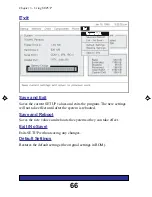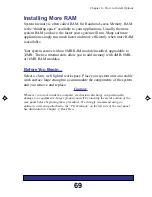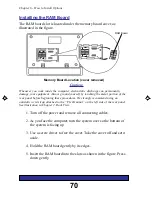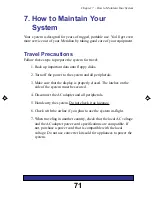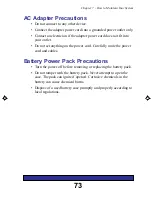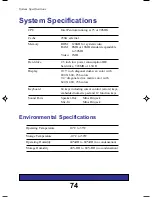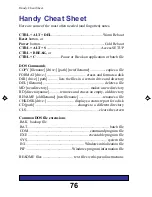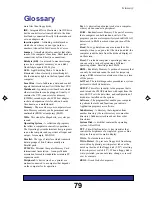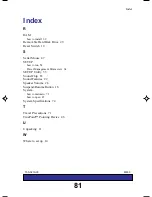
78
Glossary
This glossary provides general definitions of key terms. For an expanded
list look in standard reference books on computers.
Active Matrix - Flat screen technology that
controls each pixel with an individual transistor.
Address (Physical) - A specific location in
memory where a unit record, or sector, of data is
stored.
Application Program - Computer program that
actually performs a useful task. Word processors,
spreadsheets, and desktop publishing programs are
application programs.
AUTOEXEC.BAT File - An MS-DOS batch file
containing commands which execute
automatically when you turn on your computer.
Batch File - A file containing several commands
that execute in sequence as a group, or batch. MS-
DOS batch files must have a filename extension of
.BAT.
Boot - Short for Bootstrap. Transfer of a disk
operating system program from storage on floppy
disk or hard disk drive to computer’s working
memory. Now refers generally to the system
initialization process.
Boot Disk - A disk with an operating system
installed which loads itself into RAM on power up.
Character - Anything that can print in a single
space on the page or the screen. Includes numbers,
letters, punctuation marks, and graphic symbols.
Command Processor - The part of an operating
system that processes commands entered by you.
The command processor in MS-DOS is contained
in the COMMAND.COM file.
CPU - Central Processing Unit. The piece of
hardware which interprets instructions, performs
the tasks you indicate, keeps track of stored data,
and controls all input and output operations.
Crash - A malfunction in the computer hardware
or software, usually causing loss of data.
Cursor - The arrow, vertical I-beam or other
screen object that shows where you can click to
select something onscreen. See Insertion point.
Diagnostics - Tests and procedures the computer
performs to check its internal circuitry and set up
its configuration.
DIP Switches - Small switches on a piece of
hardware such as a CPU, a printer, or an option
card. DIP switch settings control various
functions and provide a system with information
about itself. DIP stands for Dual In-Line Package.
Directory - A list of the files stored on a disk or
a part of a disk. Sometimes called a Folder.
Disk Drive - The physical device which allows
the computer to read from and write to a disk. A
floppy disk drive has a disk slot into which you
insert floppy disks. A hard disk drive is
permanently fixed inside the system unit.
DOS - Disk Operating System. A computer
program which continuously runs and mediates
between the computer user and the Application
Program, and allows access to disk data by disk
filenames. The Disk Operating System controls
the computer’s input and output functions. See
Operating System.
DSTN- Dual Scan Twisted Nematic. By dividing
the screen in two, then refreshing both sides
simultaneously, this technique offers a sharper
picture than conventional passive matrix screens.
ECP - Extended Capabilities Port. Parallel port
with an asynchronous, byte-wide, bidirectional
data flow. It can also distinguish between
commands and data.
EPP - Enhanced Parallel Port. Parallel port with
an asynchronous, byte-wide, bidirectional
channel, plus separate address and data cycles
over the eight data lines of the interface.
File - A group of related pieces of information
called records, or entries, stored together on disk.
Text files consist of words and sentences.
Program files consist of codes and are used by
computers to interpret and carry out instructions.
Floppy disk - A flat piece of flexible plastic
coated with magnetic material and used to store
data permanently.
Format - To prepare a new disk (or erase an old
one) so it can receive information. Formatting a
disk divides it into tracks and sectors which
create addressable locations on it.
Hard Disk Drive - Sometimes called rigid disk
drives, or fixed disk drives. Unlike floppy disks,
hard disks are fixed in place inside the system
unit. They can process data faster and store many
Glossary



